15 Types of Wood Planers for Your Next Project
Wood planers are woodworking tools that are typically used for trimming down lumber, removing layers of glue, shaping wood, and more. They are designed to slide across the surface of the material, trimming thin pieces of wood with an angled blade. By gradually cutting through layers of material, the plane can make a rough surface flat and smooth. It can also reduce the thickness of the material, allowing the user to level wooden floorboards, trim swollen doors, or shave down pieces of lumber for the perfect fit.
There are many wood planer types, so in order to get the best results for your project, it’s important to have at least a basic understanding of the various types and their purposes. Use this guide to learn more about wood planers and discover which types of wood planers would be best for your next woodworking project.
-
Wood planers are woodworking tools that are typically used for trimming down lumber, removing layers of glue, shaping wood, and more. They are designed to slide across the surface of the material, trimming thin pieces of wood with an angled blade. By gradually cutting through layers of material, the plane can make a rough surface flat and smooth. It can also reduce the thickness of the material, allowing the user to level wooden floorboards, trim swollen doors, or shave down pieces of lumber for the perfect fit.
There are many wood planer types, so in order to get the best results for your project, it’s important to have at least a basic understanding of the various types and their purposes. Use this guide to learn more about wood planers and discover which types of wood planers would be best for your next woodworking project.
-
01 of 15
Block Plane
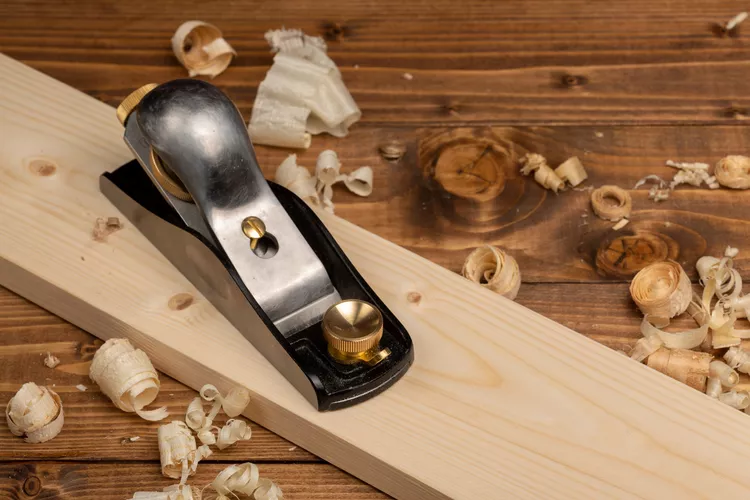
Kakmyc / Getty Images Best for: Removing thin shavings of wood and glue lines.
A block plane is a relatively small type of planing tool that ranges from about three to seven inches in length. The blade of a block plane is fixed at a lower angle than other planes, making it easy to remove very thin shavings of wood to touch up the material with a smooth finish. Block planers can also be used to remove glue lines, trim end grain, and angle square edges.
-
-
02 of 15
Jointer Plane
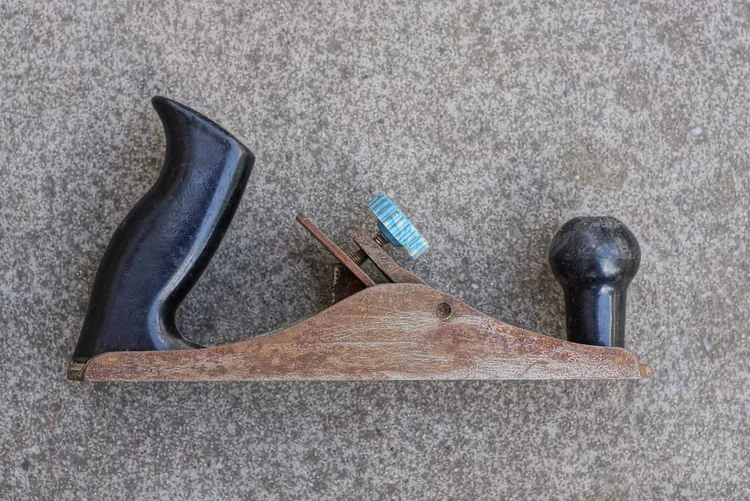
ÐнаÑолий ТÑÑенÑов / Getty Images Best for: Quickly removing thick layers of material to flatten or straighten the wood.
While a block plane is intended for fine woodworking, a jointer plane is better for removing a large amount of material to quickly flatten the surface of a large board or to straighten the edges of the material. This type of wood planer is usually about 20 to 24 inches in length, making it the longest manual wood planer. However, the length of the tool shouldn’t be seen as a hindrance. This design makes it easier for the jointer plane to ride over an uneven area as it shaves off the peaks of the material to flatten the surface.
-
03 of 15
Jack Plane
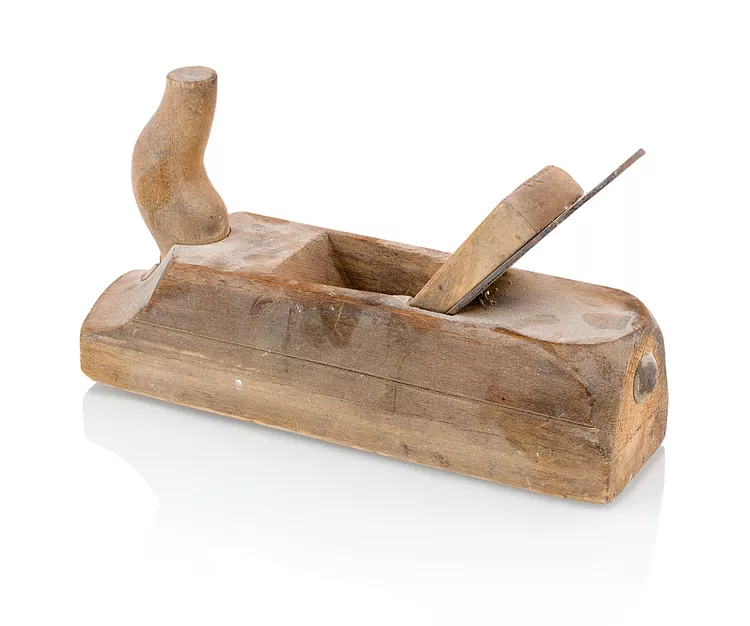
boitano / Getty Images Best for: Planing large pieces of rough stock, edge jointing, and truing.
A jack plane is about two-thirds of the size of a jointer plane, at 12 to 18 inches in length. It is intended for use on rough stock and is often the go-to plane to start the planing process. This type of wood planer uses blades with a slight camber, allowing the plane to remove thick layers of rough stock without marring the material.
A jack plane can also be used to roughly dress a timber to size, truing up the shape to meet your requirements. Just keep in mind that this is not a finishing wood planer, so to get a smooth finish you will need to use a different plane or even a sander after you are done planing the rough material with the jack plane.
-
04 of 15
Scrub Plane
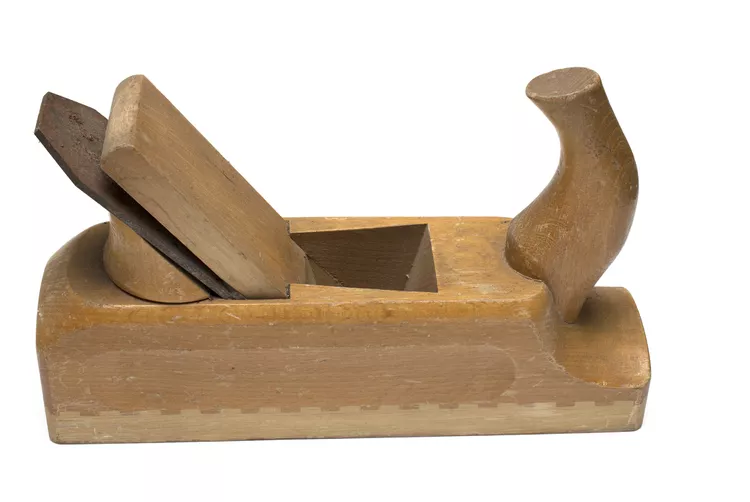
PictureSyndicate / Getty Images Best for: Significantly reducing the thickness of a board or a twist in rough stock.
Similar to a jack wood planer, a scrub plane is made for removing a large amount of material with just a few passes. This type of wood planer has a relatively short sole, a deeply curved edge, and a thick blade to make deep, gouging cuts. Scrub planes should be used when there is a lot of material that needs to be removed to even up your boards or to remove knots, twists, or other defects in the rough stock.
-
05 of 15
Shoulder Plane
Best for: Trimming mortise-tenon joint shoulders and cheeks.
Many tools are named for their intended purpose and the shoulder plane is no exception. This tool is designed for cross-grain planing with a blade that is positioned at about 20 degrees. It is commonly used to finish dadoes, rabbets, and mortise-tenon joints. Woodworkers can use the shoulder plane to trim the shoulders and the cheeks of these joints to get a smooth, gap-free fit.
-
06 of 15
Bench Plane
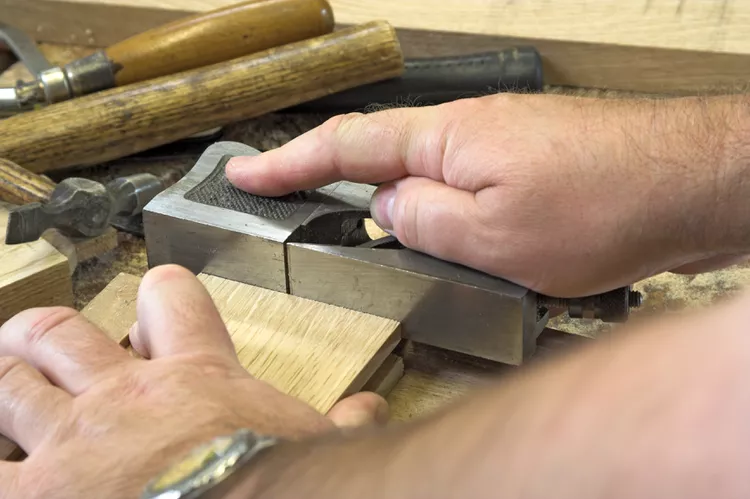
Difydave / Getty Images Best for: General-purpose truing, smoothing, tapering, and flattening.
The most common manual wood planer is a bench plane. It’s a general purpose wood planer that can be used for a wide variety of projects, including truing up pieces of stock, smoothing rough material, tapering wood for joinery, and flattening material to remove uneven hills. If you only want to worry about investing in one wood planer, a bench plane is one of the best options for a range of purposes.
-
07 of 15
Smoothing Plane
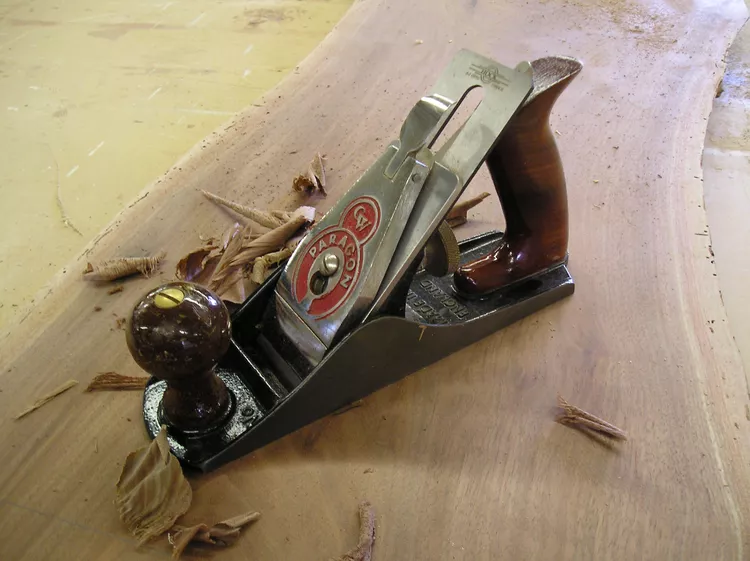
Aerolin55.Aerolin55 / Wikimedia Commons / CC BY-SA 3.0 Best for: Planing a surface to make it smooth to the touch.
As the name implies, a smoothing plane is a wood planer that is designed for planing the surface of the wood to a smooth finish. This type of wood planer is relatively small, at just seven to 10 inches in length. After using a jack plane to remove the top layer of rough material, you can switch to a smoothing plane to get a finish that is smooth to the touch.
-
08 of 15
Two-Handed Spokeshave Plane

Mint Images / Getty Images Best for: Planing convex, concave, and curved surfaces.
There are several different types of two-handed spokeshave planes, depending on the shape of the blade and the sole, including convex spokeshaves, flat bottom spokeshaves, rounded bottom spokeshaves, concave spokeshaves, and combination spokeshaves. Two-handed spokeshaves are ideal for planing convex, concave, and curved surfaces, though they have limited use for planing flat surfaces or edges.
-
09 of 15
Surform Plane
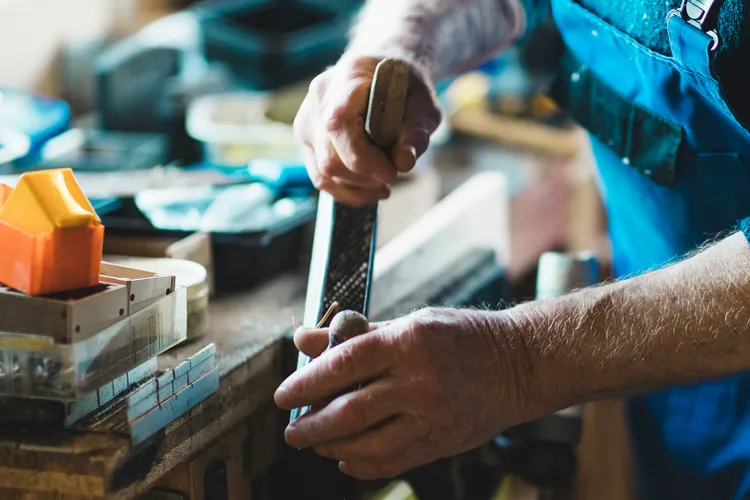
DGLimages / Getty Images Best for: Improved control and reduced clogging while flattening or smoothing material.
A surform plane is easy to identify because instead of a fixed blade, it has a perforated sheet of metal that looks similar to a cheese grater. Each of the holes in the steel strip have sharpened rims that shave away the material as the user planes the wood. Surform planes are easy to control, they can work on flat or curved surfaces, and don’t often get clogged with sawdust or small pieces of wood.
-
10 of 15
Router Plane
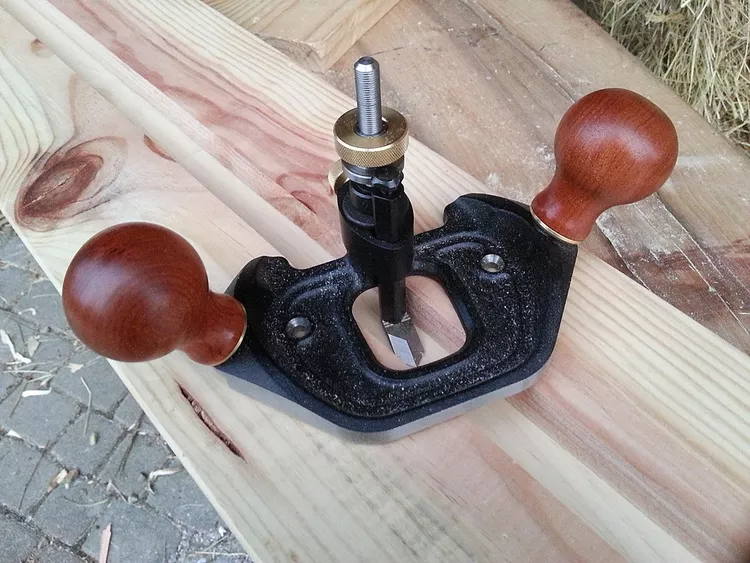
Alexmadon / Wikimedia Commons / CC BY-SA 3.0 Best for: Cutting mortises, trimming dadoes, and cleaning up rough recesses or tenon cheeks.
The thin, sturdy blade of a router plane allows this tool to cut through wood to create mortises for hinges or inlays. It can also be used to remove any rough material from the bottom or sides of a recess, making it a great choice for trimming dadoes, tenon cheeks, tenon shoulders, and smoothing out sunken panels or depressions.
-
11 of 15
Rabbet Plane
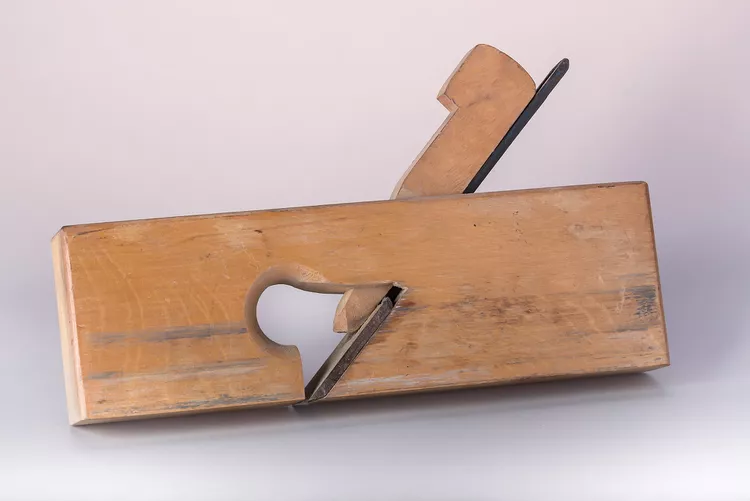
Photo by CEphoto / Wikimedia Commons Best for: Cutting and trimming step-like rabbets.
The purpose of a rabbet plane is to cut step-like grooves into the edge of a target material to create a rabbet joint. This type of plane cuts a clean groove into the wood and it can also be used to trim or smooth existing rabbet joints for a closer, gap-free fit. In order to cut the sides of the wood, the blade of a rabbet plane extends outside the face and cheeks of the main plane body. In some areas, rabbets are also referred to as rebates, so the rabbet plane can sometimes be called a rebate plane.
-
12 of 15
Handheld Electric Plane
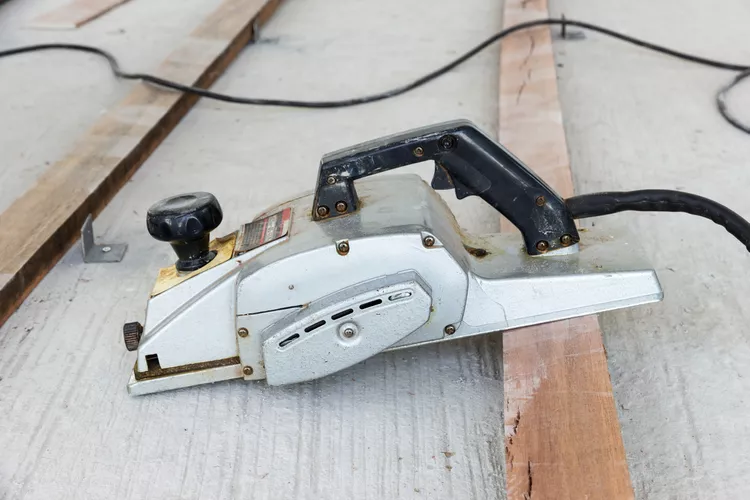
Kasipat Phonlamai / EyeEm / Getty Images Best for: Rapid planing with powered blades.
Not every wood planer requires a substantial amount of physical exertion to get the job done. A handheld electric plane relies on an electrical connection to drive two or three cutting blades, located on the base of the tool. These blades can cut up to 1/8-inch off the material per pass as they rotate as about 10,000 to 20,000 rotations per minute. Handheld electric wood planers are excellent for quickly trimming rough edges and surfaces, though it cannot create the same smooth surface as a smoothing plane.
-
13 of 15
Electric Benchtop Plane

cagkansayin / Getty Images Best for: Cutting, trimming, and truing material with high speed blades.
An electric benchtop plane is a heavy-duty option with high speed blades that can make quick work of your rough lumber. Simply set the adjustable cutting height to the desired level and feed material through the benchtop plane to rapidly cut and trim the wood to a uniform size. This type of wood planer is a good option for truing rough material instead of spending more on pre-cut lumber that matches your exact specifications.
-
14 of 15
Compass Plane
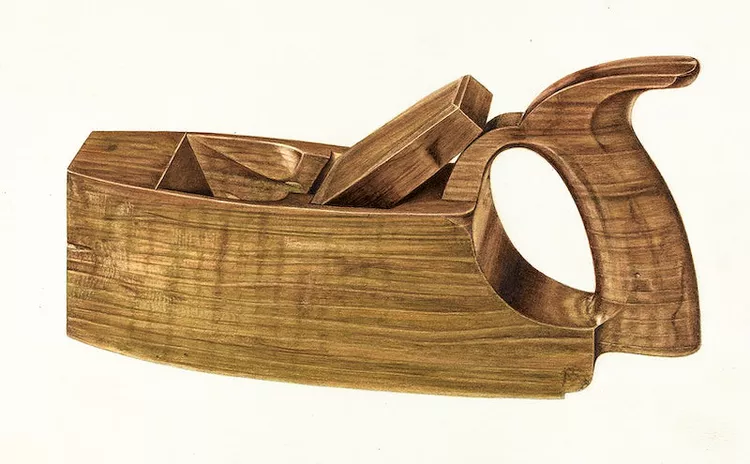
Lloyd Charles / Getty Images Best for: Planing convex and concave curves.
Most wood planers are made for flattening material, but the compass plane has a curved design that makes it ideal for planing convex and concave shapes. Older versions of the compass plane were two separate tools. One was used for concave curves and the other was used for conves curves. However, modern compass planes have an adjustable sole, so users can plane both convex and concave curves with the same tool.
-
15 of 15
Chisel Plane
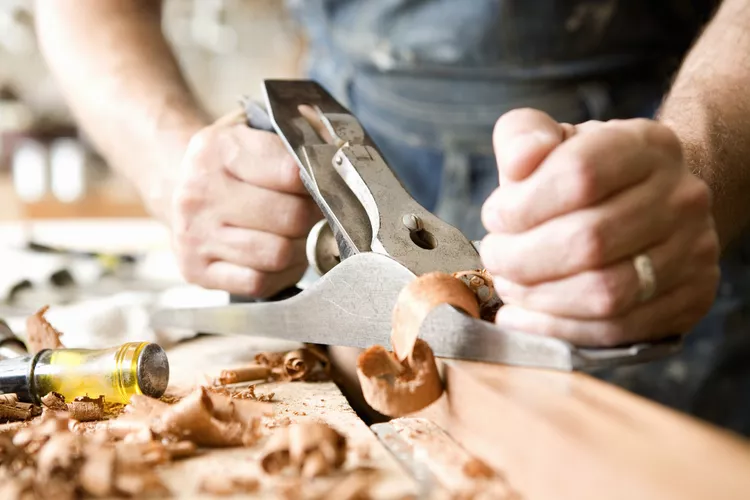
Jonathan Gelber / Getty Images Best for: Removing glue, accessing difficult corners, and cleaning up stopped rebates.
A chisel plane essentially combines the best of what chisels and planes have to offer. It has a cutting edge that is positioned at the front of the tool, which is useful for removing glue, especially in tight spaces, like the inside corners of a box. The blade can also be used to trim rough material out of the corners of a stopped up rebate, shave wooden dowels, and trim plugs or dovetail joints.
Choosing a Wood Planer
It can be difficult to select a wood planer to add to your assortment of handy woodworking tools, but if you are only looking for a general purpose wood plane, then a bench plane is the best option. However, if you are interested in more advanced planing projects, then you may need to invest in more than one plane to accomplish various woodworking tasks, such as having a compass plane for creating convex and concave curves, as well as having a handheld electric plane for quickly planing down pieces of wood.
Planes are available in a wide variety of types, so you need to consider what you will use the plane for before deciding on the which type you need. A chisel plane is better suited to removing old glue and cleaning up corners, than it is to actually planing materials. While a rabbet plane is made for cutting step-like rabbets into wood, instead of removing thin strips of material. Consider the various types of wood planer and select the tools that are best suited to fulfill your needs. Keep in mind that having more than one plane opens up new options to help you accomplish your woodworking goals, whether that is creating skirting, making dado rails, crafting furniture, or just trimming doors and floorboards. source
-
-
-
